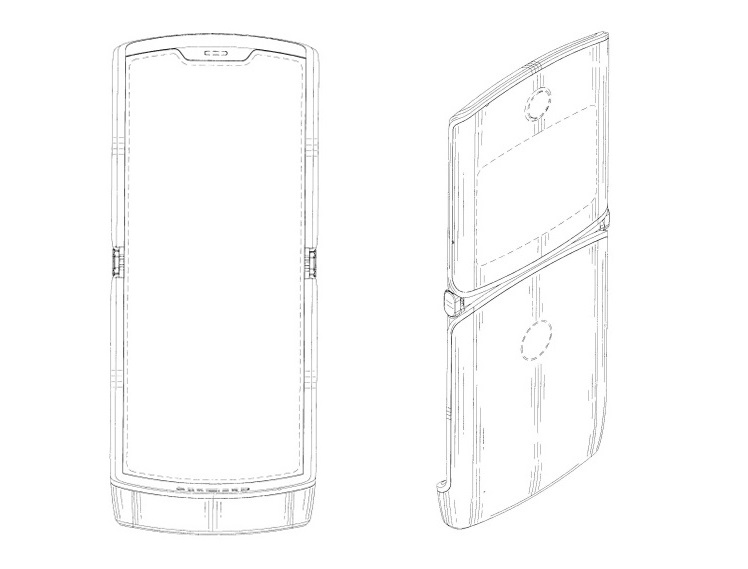Samsung has hit its stride with the Galaxy A series. The company delivered a fantastic product in the Galaxy A50, but misstepped a bit with the Galaxy A30. Samsung found its mojo again with the Samsung Galaxy A70, which takes aim at the upper mid-range competition and delivers a great product that can keep up with the best.
We recently spent some time with the Samsung Galaxy A70. Find out what we think in Android Authority's Samsung Galaxy A70 review.
About this review
I wrote this review of the Samsung Galaxy A70 after using it over the course of a week. The phone shipped with Android Pie and One UI 1.1 out of the box. The phone had the PPR1.180610.011.A705GMDDU1ASD1 build number with the March 1st, 2019 security patch. I tested the phone on Airtel's network in New Delhi, India.
Samsung Galaxy A70 review: The big picture
With the A series, Samsung is tackling competitors on all fronts. The A70 is aimed at users who want a large display and superb battery life to back that up. Samsung noted that the refreshed A and M series lineup is directed at a millennial audience and the A70, in particular, looks like a perfect fit for people who spend a lot of time browsing social media or watching video content on their phone.

What really sets the phone apart from competing devices is the degree of refinement and the smooth experience it offers. Support for Samsung Pay, too, is a standout differentiating factor, though the feature might not be quite the system seller than Samsung is hoping it to be.
What's in the box
- 25-watt fast charger
- USB-C to USB-C Cable
- SIM ejector Tool
- TPU case
- In-ear headset
The bundled 25W fast charger makes the package quite appealing since most competing devices tend to ship with a low-watt charging adapter. A very basic clear case is included in the package, though you will probably want to switch it out for a better case. A minor but interesting addition is the switch to a USB-C to USB-C cable, which is a departure from the USB A to C cables we've seen bundled with most phones.
Design
- 164.3 x 76.7 x 7.9mm
- 183 grams
- Waterdrop notch
- USB-C port
- Headphone jack
- Optical in-display fingerprint scanner
Stretch the Samsung Galaxy A50 just a bit and you end up with the A70. The design is nigh identical to those of both the Galaxy A50 and the A30. I get that Samsung is trying to go for a common design language across the board, but differentiation and some high-quality materials would certainly help in the premium mid-range segment.

As it stands, the Galaxy A70 is an all-plastic smartphone with an ultra-glossy rear that mixes things up with a rainbow-like pattern. It looks plenty good, but the back is a scratch and scuff magnet. After just a week of use, I'm already starting to see micro scratches on the phone. I'm not very confident about how the phone will hold up to months of use. Samsung bundled a TPU protective case in the box, but it is utilitarian at best.
The ultra-glossy back looks great, but is a scratch and scuff magnet.
Buttons and port positioning is as standard as it comes with the volume rocker and power button both placed on the right side. Samsung did an excellent job with ergonomics despite the large size of the phone. If I had to nitpick, the volume rocker could have a bit more segregation for better hands-free control, but this isn't a big issue. Along the bottom edge lies the USB-C port and the headphone jack.

Though the A70 is similar to the Galaxy A50, we're glad to see that the chin is drastically slimmer on the larger phone. Between the 6.7-inch display, minimal bezels, Infinity-U waterdrop notch, and tiny chin, the Galaxy A70 serves up a wide and beautiful canvas to view multimedia content.
Support for Samsung Pay on the Galaxy A70 is bound to help push forward the tap-to-pay solution.
Like the Galaxy A50, the A70 includes an in-display optical fingerprint scanner. Performance is, frankly put, not that great. It takes a full second and sometimes more for the sensor to recognize the input. You'll have much better luck with face recognition, a much faster solution that's not quite as secure.
A second and more useful upgrade is support for Samsung Pay. Outside of Samsung's flagships, the A70 is the first device to support MST. Most point-of-sale (POS) terminals in India do not support NFC, which means MST is necessary for tap-and-go payments. MST allows the Galaxy A70 to emulate the swiping action of your debit card at payment terminals that lack NFC.

Despite the larger dimensions, the Galaxy A70 is a reasonably ergonomic phone. While one-handed use would definitely be a stretch, the phone is generally comfortable to hold and the rounded corners certainly help. The phone is on the heftier side, clocking in at 183g, but that can't be helped with the large display and battery.
Display
- 6.7-inches
- Full HD+
- 20:9 Aspect ratio
- Super AMOLED
The Galaxy A70 comes equipped with a Samsung Super AMOLED display. The screen is large, vibrant, and bright enough to really enjoy multimedia. Be it the latest Netflix series or a popular mobile game, elements pop on the display and the experience is most definitely immersive. The phone has Widevine L1 support, so you'll be able to stream your favorite content in high definition.

The Full HD+ resolution is perhaps a bit low on a screen this large. Stretched across 6.7 inches, there is a certain softness to icons, text, and certain elements. However, I doubt that most users would care or even notice unless the phone is placed next to a higher-resolution panel. We should point out that the display is often the priciest component of any phone, so Samsung is likely saving a few dollars by sticking with Full HD+ rather than jumping to Quad HD+.
There are robust settings available to adjust the display. You can change the saturation level and white balance, and also individual values for the RGB spectrum.
Yes, the phone gets bright enough to be easily viewable outdoors.
Performance
- Octa-core Snapdragon 675
- 6GB of RAM
- Adreno 612 GPU
- 128GB storage
- microSD expansion slot
The Galaxy A70 joins the growing ranks of phones powered by the Snapdragon 675. The chipset provides a great balance between performance and battery life and that's exactly what we saw when testing the A70.
The Snapdragon 675 is an octa-core processor with six Cortex A55 efficiency cores. Two Cortex A76 cores provide all the power you might need. This processor is found in the Redmi Note 7 Pro as well as the Vivo V15 Pro. While the processor excels in CPU-intensive tasks, the Adreno 612 GPU isn't quite all powerful. It sometimes struggles behind the likes of the Adreno 616 on the Snapdragon 710 platform. For example, gaming performance is just a bit smoother on the latter platform.
The phone ships with 128GB of storage, of which about 108GB is available at first boot. Storage can be expanded via the dedicated microSD card slot. The phone also has dual nano SIM card slots with support for VoLTE on both. I tested out the phone on Airtel's network in Delhi and the phone did a pretty good job at holding onto the network. Compared to the Galaxy A50, the A70 seemed to fair a bit better and call quality was mostly clear at both ends.

Day to day performance on the Samsung Galaxy A70 is fantastic. The company has done a really good job optimizing the software. With the same Snapdragon 675 processor and an equivalent amount of RAM, the phone manages to beat the Redmi Note 7 Pro in refinement, a true testament to how well-optimized software can work wonders. Transitions and animations are as smooth as they come. I did not notice any lags in the interface, and multitasking performance was plenty good too.

PUBG on the Samsung Galaxy A70 runs at all the way up to ultra graphics and, despite the warning about a possible drop in frame rate, the phone plays the game perfectly. While the phone did get warm over longer play sessions, it was never uncomfortable to hold and the expansive screen really adds to the game play experience.
#gallery-1 { margin: auto; } #gallery-1 .gallery-item { float: left; margin-top: 10px; text-align: center; width: 50%; } #gallery-1 img { border: 2px solid #cfcfcf; } #gallery-1 .gallery-caption { margin-left: 0; } /* see gallery_shortcode() in wp-includes/media.php */- AnTuTu
- 3D Mark
Battery
An advantage of the larger dimensions is that Samsung was able to stick in a much larger battery. The 4,500mAh cell in the Galaxy A70 ensures that you will easily get a full day of use and likely more. On average, the phone lasted close to two full days. Screen-on time was close to seven hours, a pretty good figure for a phone with a display as large as this.
It is easy to top off the battery. The A70 is the first Samsung phone to ship with support for 25W fast charging. While not as fast as some of the competing standards like VOOC or Dash, you can still charge the battery in under two hours.
Software
- Android Pie
- One UI 1.1
- Limited bloatware
The phone runs Android Pie with One UI 1.1 on board. The software here is exactly the same as other OneUI devices such as the Galaxy S10 and A50, among others. The software is easy to use with multiple options to tweak the interface to your liking. It supports both the newer gesture-based navigation as well as the older navigation keys.
#gallery-2 { margin: auto; } #gallery-2 .gallery-item { float: left; margin-top: 10px; text-align: center; width: 50%; } #gallery-2 img { border: 2px solid #cfcfcf; } #gallery-2 .gallery-caption { margin-left: 0; } /* see gallery_shortcode() in wp-includes/media.php */Like other recent Samsung devices, the phone doesn't ship with a full load of branded apps and instead allows you to choose which ones to install during initial set up. There is limited bloat in the form of Netflix, Amazon, and Daily Hunt. Most, but not all, can be removed.
Camera
- 32MP rear sensor, f/1.7 aperture
- 8MP 120-degree, wide-angle camera
- 5MP depth sensor
- 32MP Samsung GD1 front-facing camera
When upgrading to a premium mid-range smartphone, imaging capabilities are one of the most tangible and visible improvements. Throwing hardware at the problem, however, doesn't necessarily mean that you will get amazing results.

Like we'd noted in our Samsung Galaxy A50 review, as well as our preview for the A70, the camera tends to overexpose shots in order to make them look brighter. In decent lighting there isn't much noticeable loss of detail, but you can easily spot the overblown highlights. In a country like India, where harsh sunlight is a reality for the better part of the year, this can prove to be quite problematic when shooting outdoors.

Moving to indoor lighting results in an immediate degradation in picture quality. There is a certain softness to the image, and the white balance is set a bit too warm. Additionally, aggressive noise reduction means that low-level detail like skin contours or textures are completely lost.
The above sample was shot using the live focus mode. It does a fairly good job at identifying the outline of the subject, but certainly wasn't perfect. You can notice the crude outline around stray hair.
 Galaxy A70 Camera Indoors Galaxy A70 Camera Indoors Wide
Galaxy A70 Camera Indoors Galaxy A70 Camera Indoors Wide 
Shooting indoors in comparatively low light, you can notice a similar drop in image quality. While the images are usable, there is a pervasive softness and dullness to the images. The noise reduction gives the image a watercolor painting effect. The wide-angle image produces noticeably worse results.
#gallery-3 { margin: auto; } #gallery-3 .gallery-item { float: left; margin-top: 10px; text-align: center; width: 50%; } #gallery-3 img { border: 2px solid #cfcfcf; } #gallery-3 .gallery-caption { margin-left: 0; } /* see gallery_shortcode() in wp-includes/media.php */If you're the kind of person who is constantly posting selfies and images on social media, the front camera might be right up your alley. Depending on the setting you choose within the camera app, the output will vary from a 32MP image to a pixel-binned 8MP shot. The camera defaults to pixel-binning images, which is what we have posted above.
The Galaxy A70 does not have two front-facing cameras. The single front-facing camera has a wide-angle lens and if you wish to switch to a closer focal range, the camera app simply crops. You can take a look at full resolution Samsung Galaxy A70 camera samples by clicking here.
Video recording on the Samsung Galaxy A70 goes up to 4K resolution at 30fps, but there is no stabilization available. Dynamic range in recorded video is quite poor and you end up losing a lot of details in darker situations. The camera takes a lot of time to catch up with a focus lock with changing scenes. The camera can shoot 480fps slow motion video at 720p resolution, which is great if you want to get some creative shots, though you will need adequate light for quality results.
Specifications
| Samsung Galaxy A70 | |
|---|---|
| Display | 6.7-inch Super AMOLED Infinity-U 2,400 x 1,080 resolution |
| Processor | Qualcomm Snapdragon 675 |
| RAM | 6/8GB |
| Storage | 128GB |
| MicroSD | Yes (up to 512GB) |
| Battery | 4,500mAh 25W fast charging |
| Cameras | Rear: 32MP sensor, f/1.7 aperture 8MP ultra wide sensor, f/2.2 aperture 5MP depth sensor, f/2.2 aperture Front: 32MP sensor, f/2.0 aperture |
| IP rating | No |
| Headphone jack | Yes |
| Security | In-display fingerprint sensor, facial recognition |
| Software | Android 9 Pie |
| Dimensions and weight | 164.3 x 76.7 x 7.9mm 183g |
| Colors | black, white, blue, coral |
Value for money
Samsung Galaxy A70 — 6GB RAM, 128GB storage, 28,990 rupees (~$420)
The Samsung Galaxy A70 is available via Samsung's own online store, Flipkart, as well as regular stores across the country. The phone puts up a good fight against competitors like the Vivo V15 Pro, Nokia 8.1, and even the Poco F1.
The Galaxy A70 presents itself as a great overall package with a focus on usability. Sure, the Vivo V15 Pro has a more flashy design, but the pop-out camera is a potential breakage point. Vivo's take on Android is not everyone's cup of tea. OneUI, on the other hand, has been cleaned up substantially and brings a very pleasing user experience to the table.
Then there's the Nokia 8.1, which promises stock Android, but lacks a massive battery, fast 25W charging, and the large, beautiful Super AMOLED display.
Pit against the Poco F1, things get a lot more interesting. The Poco is directed at a very different audience — an audience that cares more about all out performance. The Galaxy A70, at least on paper, cannot keep up with the Snapdragon 845-toting competitor, but specs aside you have a phone that can more or less match and play every game, run every app almost just as well.
Samsung Galaxy A70 review: The Verdict
The Samsung Galaxy A70 is one of the most comprehensive packages you can buy right now. It might not be the most powerful, nor does it have the absolute best camera, but what you get is an amazing blend of usability and a certain degree of polish that competing devices don't have.
Reliability is the key word when it comes to the Galaxy A70.
This is a device that will be a reliable daily driver, with reliability being the key word here. I didn't notice a single stutter or slow down in my usage, and the phone could easily play any game I threw at it. The large 4,500 mAh battery can easily last well over a day of use. The large display makes it perfect for heavy multimedia consumers, or for those who spend a large part of their day on social media.
The design looks great and, while you will likely have to put on a case to ward off scratches, the use of plastics means the phone is more resilient to drops when compared to glass.
That's it for our review of the Samsung Galaxy A70. What do you think about Samsung's refreshed A series devices? Do you think they serve up a good balance between performance and value? Let us know in the comments section.
from Android Authority http://bit.ly/2KRhCim
via IFTTT

































